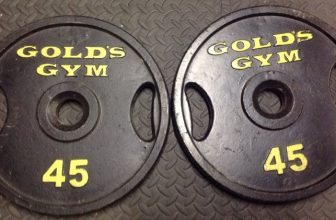
Exercise for Weight Loss: How to Create an Effective Workout Plan
Introduction:
- Exercise is an essential component of a weight loss plan
- Regular physical activity can help to burn calories, boost metabolism, and improve overall health
- However, creating an effective workout plan can be overwhelming, especially for beginners
-
Assessing your fitness level:
- Before creating a workout plan, it’s important to assess your current fitness level
- This will help you to create a plan that is appropriate for your abilities and goals
- Consult with a doctor or personal trainer if needed
-
Setting specific goals:
- Setting specific and measurable goals can help to keep you motivated and on track
- Examples include losing a certain amount of weight, increasing endurance, or building muscle
-
Incorporating a variety of exercises:
- To avoid boredom and achieve a well-rounded fitness plan, incorporate a variety of exercises
- Examples include cardio, strength training, and stretching
- Cardio exercises such as running, cycling or swimming are good to burn calories and improve cardiovascular fitness
- Strength training such as weightlifting, resistance band exercises, or bodyweight exercises can help to increase muscle mass and boost metabolism
- Stretching and yoga can help to improve flexibility and reduce stress
-
Creating a schedule:
- It’s important to create a schedule that is realistic and fits into your lifestyle
- Aim for at least 150 minutes of moderate-intensity aerobic activity or 75 minutes of vigorous-intensity aerobic activity per week, as well as muscle-strengthening activities at least two days per week.
- Start with 3-4 days a week, and increase gradually
-
Mixing up your routine:
- Mixing up your routine can help to prevent boredom and plateaus
What are the 7 steps to creating a workout plan?
Here are 7 steps to creating an effective workout plan:
- Assessing your fitness level: Before creating a workout plan, it’s important to assess your current fitness level. This will help you to create a plan that is appropriate for your abilities and goals. Consult with a doctor or personal trainer if needed.
- Setting specific goals: Setting specific and measurable goals can help to keep you motivated and on track. Examples include losing a certain amount of weight, increasing endurance, or building muscle.
- Incorporating a variety of exercises: To achieve a well-rounded fitness plan, incorporate a variety of exercises. Examples include cardio, strength training, and stretching.
- Creating a schedule: It’s important to create a schedule that is realistic and fits into your lifestyle. Aim for at least 150 minutes of moderate-intensity aerobic activity or 75 minutes of vigorous-intensity aerobic activity per week, as well as muscle-strengthening activities at least two days per week.
- Mixing up your routine: Mixing up your routine can help to prevent boredom and plateaus. Try new exercises and switch up your routine regularly.
- Progressive overload: Gradually increase the intensity and volume of your workout as your fitness level improves. This can help to prevent plateaus and continue to see progress.
- Monitoring your progress: Keep track of your progress by monitoring your weight, measurements, and performance. This will help you to see the results of your efforts and make adjustments
How do you structure a workout plan?
Here are some ways to structure a workout plan:
- Split routine: A split routine involves dividing your workout into different muscle groups on different days of the week. For example, Mondays for chest and triceps, Tuesdays for back and biceps, Wednesdays for legs, and so on. This allows you to focus on specific muscle groups and avoid overtraining.
- Full-body routine: A full-body routine involves working all major muscle groups in each workout. This can be a good option for beginners or those with limited time to devote to working out.
- Circuit training: Circuit training involves performing a series of exercises in a circuit, with little to no rest between exercises. This can be a good option for those looking to increase cardiovascular fitness and burn calories.
- High-intensity interval training (HIIT): HIIT involves short bursts of intense exercise followed by periods of rest. This can be a good option for those looking to burn calories and increase cardiovascular fitness.
- Cardio-Strength combo: A combination of cardio and strength exercises in the same workout can help to increase overall fitness, burn calories, and improve cardiovascular health.
When structuring a workout plan, it’s important to consider your personal fitness goals, time constraints, and any limitations or injuries you may have. It’s also important to gradually increase the intensity and volume of your workouts over time to avoid injury and continue to see progress. And lastly, always consult with a doctor or personal trainer if you have any doubts or concerns about your workout plan.
What is the most effective workout plan?
The most effective workout plan will vary depending on an individual’s personal goals, fitness level, and lifestyle. However, there are a few key principles that are generally considered effective for weight loss and overall fitness:
- Incorporating a combination of cardio and strength training exercises: Cardio exercises such as running, cycling, or swimming can help to burn calories and improve cardiovascular fitness. Strength training such as weightlifting, resistance band exercises, or bodyweight exercises can help to increase muscle mass and boost metabolism.
- Creating a schedule that fits your lifestyle: It’s important to create a workout schedule that is realistic and fits into your lifestyle. Aim for at least 150 minutes of moderate-intensity aerobic activity or 75 minutes of vigorous-intensity aerobic activity per week, as well as muscle-strengthening activities at least two days per week.
- Progressive overload: Gradually increase the intensity and volume of your workout as your fitness level improves. This can help to prevent plateaus and continue to see progress.
- Monitoring your progress: Keep track of your progress by monitoring your weight, measurements, and performance. This will help you to see the results of your efforts and make adjustments.
- Mixing up your routine: Mixing up your routine can help to prevent boredom and plateaus. Try new exercises and switch up your routine regularly.
- Eating a healthy diet: Eating a healthy diet is essential to weight loss and overall health. A balanced diet that is rich in fruits, vegetables, lean protein, and whole grains can
What exercise is best for weight loss?
There are several exercises that are considered effective for weight loss, including:
- Cardio exercises: Cardio exercises such as running, cycling, swimming, and stair climbing can help to burn calories and improve cardiovascular fitness.
- High-intensity interval training (HIIT): HIIT is a type of cardio that involves short bursts of intense exercise followed by periods of rest. This can be a good option for those looking to burn calories and increase cardiovascular fitness.
- Strength training: Strength training exercises such as weightlifting, resistance band exercises, or bodyweight exercises can help to increase muscle mass and boost metabolism.
- Circuit training: Circuit training involves performing a series of exercises in a circuit, with little to no rest between exercises. This can be a good option for those looking to increase cardiovascular fitness and burn calories.
- Calisthenics: Calisthenics exercises such as push-ups, pull-ups, squats, and lunges can be performed using your own body weight and can be effective for weight loss.
It’s important to note that the most effective exercise for weight loss is the one that you will stick to. A combination of cardio and strength training is generally considered to be the best approach for weight loss. It’s also important to remember that diet plays an important role in weight loss and that it’s a good idea to consult a doctor or trainer before starting a new exercise program.
What exercise burns the most stomach fat?
There is no one exercise that specifically targets stomach fat, but there are several exercises that can help to burn calories and reduce overall body fat, including stomach fat.
- Cardio exercises: Cardio exercises such as running, cycling, swimming, and stair climbing can help to burn calories and improve cardiovascular fitness. These exercises can help to reduce overall body fat, including stomach fat.
- High-intensity interval training (HIIT): HIIT is a type of cardio that involves short bursts of intense exercise followed by periods of rest. This can be an effective way to burn calories and reduce body fat.
- Strength training: Strength training exercises such as weightlifting, resistance band exercises, or bodyweight exercises can help to increase muscle mass and boost metabolism. This can lead to an increase in calories burned and a reduction in body fat.
- Circuit training: Circuit training involves performing a series of exercises in a circuit, with little to no rest between exercises. This can be a good option for those looking to increase cardiovascular fitness and burn calories.
- Calisthenics: Calisthenics exercises such as push-ups, pull-ups, squats, and lunges can be performed using your own body weight and can be effective for burning calories.
It’s important to keep in mind that weight loss, especially belly fat, is a result of a combination of a healthy diet and regular exercise. By maintaining a calorie deficit, consuming healthy food, and including a combination of cardio and strength training exercises will help you burn fat throughout your body, including belly fat.
Is 30 minutes of exercise a day enough to lose weight?
30 minutes of exercise a day can be a good starting point for weight loss, but it may not be enough for some people to achieve their weight loss goals. The amount of exercise needed for weight loss depends on several factors, including a person’s starting weight, diet, and overall health.
The Centers for Disease Control and Prevention (CDC) recommends at least 150 minutes of moderate-intensity aerobic activity or 75 minutes of vigorous-intensity aerobic activity per week, plus muscle-strengthening activities at least two days a week for overall health.
30 minutes of exercise a day can help to burn calories, improve cardiovascular fitness and help to increase muscle mass. However, to lose weight, you need to be in a calorie deficit, burning more calories than you consume. Therefore, 30 minutes of exercise a day may not be enough to create a calorie deficit large enough to lose weight, especially if you’re not making changes to your diet.
It’s important to remember that weight loss is a gradual process and it’s not always linear. It’s important to be consistent and make sustainable lifestyle changes, including regular exercise and healthy eating, to achieve and maintain weight loss over time.




